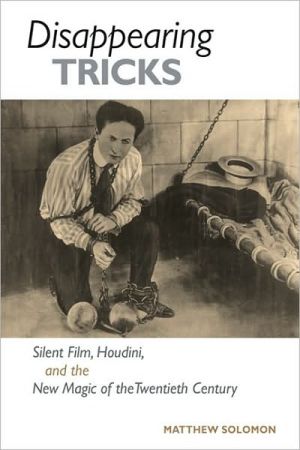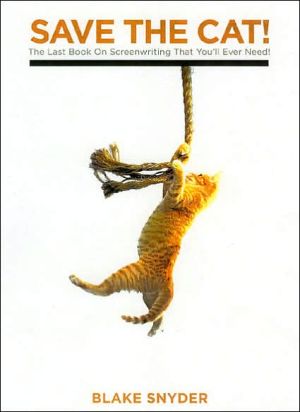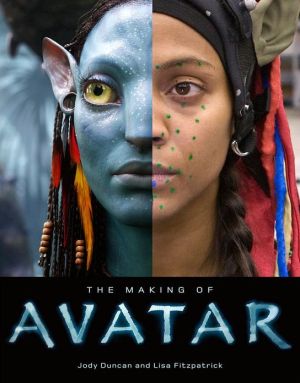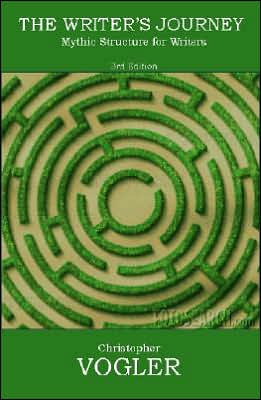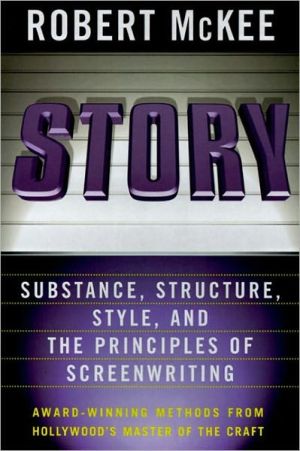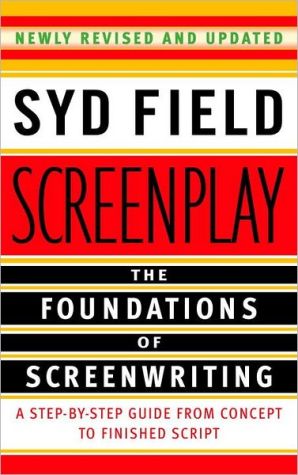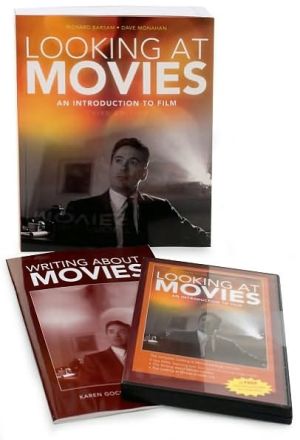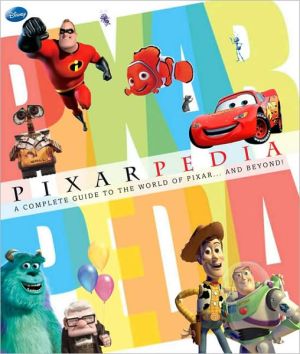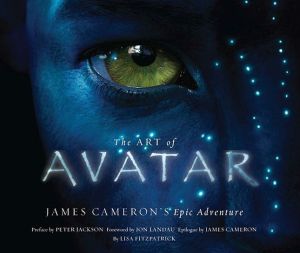Disappearing Tricks: Silent Film, Houdini, and the New Magic of the Twentieth Century
Disappearing Tricks revisits the golden age of theatrical magic and silent film to reveal how professional magicians shaped the early history of cinema. While others have called upon magic as merely an evocative metaphor for the wonders of cinema, Matthew Solomon focuses on the work of the professional illusionists who actually made magic with moving pictures between 1895 and 1929.\ The first to reveal fully how powerfully magic impacted the development of cinema, the book combines film and...
Search in google:
Disappearing Tricks revisits the golden age of theatrical magic and silent film to reveal how professional magicians shaped the early history of cinema. Where others have called upon magic as merely an evocative metaphor for the wonders of cinema, Matthew Solomon focuses on the work of the professional illusionists who actually made magic with moving pictures between 1895 and 1929. The first to reveal fully how powerfully magic impacted the development of cinema, the book combines film and theater history to uncover new evidence of the exchanges between magic and filmmaking in the United States and France during the silent period. Chapters detailing the stage and screen work of Harry Houdini and Georges Méliès show how each transformed theatrical magic to create innovative cinematic effects and thrilling new exploits for twentieth-century mass audiences. The book also considers the previously overlooked roles of anti-spiritualism and presentational performance in silent film. Highlighting early cinema's relationship to the performing body, visual deception, storytelling, and the occult, Solomon treats cinema and stage magic as overlapping practices that together revise our understanding of the origins of motion pictures and cinematic spectacle.
Disappearing Tricks\ Silent Film, Houdini, and the New Magic of the Twentieth Century \ \ By Matthew Solomon \ University of Illinois Press\ Copyright © 2010 Matthew Solomon\ All right reserved.\ ISBN: 978-0-252-07697-8 \ \ \ Introduction\ There remains a positive fact to account for: The cinema— which is not the only field in which manipulation may be, however imperfectly, conceived—the cinema, in preference to other fields, was chosen (and with what fanaticism!) by certain theoreticians of manipulation. —Christian Metz \ The magic of movies is one of the most durable metaphors in all of film culture. In its contemporary iterations, "movie magic" evokes cinema's power to conjure up marvelous worlds, to fabricate fascinating situations and stories, as well as to bring us into apparent proximity with people and places that we might never encounter elsewhere. But what makes the movies magical? And what kind of magic, exactly, are the movies? While these and other related questions have long been central to film theory, this book suggests that film history also can help us to answer them. The origins of this compelling metaphor can be traced to the beginnings of the film medium, when moving pictures had a close relationship with a very specific form of magic: theatrical conjuring and illusion, or stage magic.\ The appearance of moving pictures coincided with the golden age of theatrical magic, when magicians were ubiquitous figures in popular entertainment and stage magicians were some of the first film exhibitors, film performers, and filmmakers. A number of different magicians conjoined moving pictures and the practices of magic by showing films as part of magic shows and by making films that transformed familiar tropes of magic theater with cinematic technology, constituting a formative intervention in the history of cinema. Magicians forged new modes of magic for the twentieth century onstage and onscreen, shaping film practice both directly and indirectly during the silent period. Some of the earliest film spectators saw cinema as part of magic shows, and many more would have associated moving pictures with magic through the trick film. Unlike the genteel tricks of an earlier generation of magicians, which had been performed more or less exclusively for middle- and upper-class spectators, the new theatrical and cinematic magic that flourished during the early twentieth century was aimed at more inclusive mass audiences of modern commercial entertainment and was accessible to a fairly broad spectrum of social classes.\ As a topic, magic has a potentially endless scope when applied to cinema, but in this book I focus on the practices of stage magicians and, in particular, on the uses to which a number of different stage magicians put the film medium during the silent period. In general, magician-filmmakers took two different approaches to the creation of cinematic magic. On the one hand, they took advantage of cinema's capacity for reproducing movement in order to showcase their own physical virtuosity. On the other hand, they exploited the deceptive possibilities inherent in montage and mise-en-scène to produce new marvels. Yet these two approaches were never mutually exclusive and were often complementary, as the work of the two magician-filmmakers who figure most prominently in this book suggests. The films of Georges Méliès (1861–1938), the magic theater director who was one of cinema's first internationally recognized figures, make extensive use of trick cinematography, but most of his films also depend on the performances of dancers, acrobats, and Méliès's own dynamic form of pantomime. Similarly, the films of Harry Houdini (1874–1926), the escape artist who magnified his exploits with cinema, include not only nonfiction films of his outdoor escapes, but also a serial and a number of feature films utilizing trick effects. Méliès and Houdini worked simultaneously in both cinema and theater, frequently combining films with live performance and bridging the apparent divide between cinematic recording and manipulation. Although magicians constituted but one professional group that came into contact with cinema during this formative period, they had a disproportionate impact on its early development by firmly rooting the magic of film in the stunning transformations of contemporaneous theatrical illusion. Additionally, the book's close examination of how magic and cinema interacted during the late nineteenth and early twentieth centuries brings into sharp relief the historical process through which the cinema we know today was defined and consolidated. Film history quickly left magicians behind, as the period of trick films and magician-filmmakers was a relatively short one, but the way magicians negotiated early cinema's relationship to the performing body, to storytelling, and to the occult is extremely revealing and ultimately had a lasting effect on our shared understanding of the cinematic medium.\ During the nineteenth century, magicians skillfully melded theatrical machinery, lighting effects, and carefully placed mirrors on the stage to make visible the impossible. Human bodies were the fulcrum on which many of these illusions hinged: Magicians made bodies appear and disappear at the wave of a wand, transported bodies through physical barriers, and exchanged them for one another instantaneously. Magicians penetrated, severed, and otherwise violently traumatized the body (before restoring it unharmed) or else dematerialized it entirely into spectral form. While the moving body is clearly central for the cinema—as the power and tenacity of the star system alone demonstrates—the projected image necessarily deprives it of its materiality, rendering the body fleeting and evanescent.\ The cinematic medium perfected the dematerialization of the body that had been one of the magician's specialties, but films also carried on late-nineteenth-century magic's conspicuously gendered asymmetry of power, by which male magicians often subjected female assistants to effects involving apparent mutilation and violence. The scarcely concealed misogyny of stage magic and the trick film has been insightfully discussed by Lucy Fischer, Linda Williams, and Karen Beckman. Although several women magicians were active around the turn of the century, these occasional exceptions to the rule did little to undermine the sharp gender dichotomy that had become entrenched in magic during the 1880s; before this time, magicians' assistants were typically male children and young men of color. The historical parameters of this book are nearly bracketed by two of the most gendered—not to mention iconic—illusions in the history of magic, the Vanishing Lady, first performed in 1886 by Buatier de Kolta (an illusion that is the subject of at least three different early films from 1896 to 1898), and Sawing a Woman in Half, first performed in 1921 by P. T. Selbit. The latter illusion was so closely identified with female vivisection that when Adelaide Herrmann, the most celebrated female magician of the early twentieth century, performed the illusion, she, too, sawed a woman in half rather than reverse the gender roles. A number of prominent magicians relied on male African American assistants well into the twentieth century, although the racial dynamics of this arrangement, by which a seemingly hapless assistant actually performed many of the magician's illusions, have received relatively little attention.\ Perhaps more than any other arena of popular culture prior to cinema, stage magic allowed audiences to see extraordinary things that seemed to defy the laws of nature, but its illusions also worked simultaneously to make people look differently and to question what they were ostensibly seeing, encouraging a form of skepticism that was uniquely attuned to the visual deceptions of the modern world and of image-based media. The incredulity that magic produces also worked to counter spiritualist claims that the deceased could manifest themselves to the living. Magic's creation of disbelief was tied up with the anti-spiritualism of the magic profession and the era of silent film, which was, in the words of Paul Virilio, "a time when optical illusion became confused not just with the illusion of life but with the illusion of survival."\ Placing early cinema in the context of magic theater, Tom Gunning emphasizes, is a necessary corrective to notions of early film audiences as excessively credulous, notions that are epitomized by the tenacious myth that the first film spectators fled the arrival of the train in the Lumières' film, fearing that it was bearing down on them in the audience: "As in the magic theatre the apparent realism of the image makes it a successful illusion, but one understood as an illusion nonetheless." Like Méliès, who described cinema as an "extraordinary trick" after seeing one of the first Lumière programs, early film audiences did not naively mistake moving pictures for reality, Gunning asserts, but instead would have understood the new medium in terms "related more strongly to the traditions of magic theatre (with its presentation of popular science as spectacle) than to later conceptions of documentary realism."\ In the 1950s, the French filmologist Étienne Souriau established a useful historical and theoretical framework for thinking about the relationship between magic and cinema. Souriau posited a crucial connection between cinema and what Marian Hannah Winter had termed the "theatre of marvels," a category of visual spectacle encompassing circus, fairground shows, and magic that was distinct from dramatic theater. Writing in 1952, Souriau stated, "It is really fruitful to compare film to ... the 'theatre of marvels,' that is to say, ... circus, prestidigitation, illusion.... The connection is of historical importance because the art of film came out of this atmosphere and because its historical antecedents belong to this category.... The comparison is of interest not only for films that embrace the marvelous, but particularly in relation to the belief or credulity of the spectator, and the credibility of cinema itself."\ Souriau claimed that the trick films and fairy tales of Méliès, the animated films of Émile Cohl, and the animal films produced by Pathé-Frères all demonstrate how the early cinema continued the traditional means of the "theatre of marvels," inspiring wonder and surprise. But, historically, he contended, "cinematic realism tends bit by bit to overshadow astonishment ... leaving artificiality in its place." As the marvelous mise-en-scène and eye-catching techniques of the theatre of marvels were replaced by more naturalistic settings and more verisimilar modes of performance, the self-conscious illusionism of early cinema disappeared: "all the trick effects (superimposition, etc.) that were at first intended (like the tricks of the conjurer and the stage machinery of the féerie) to provoke astonishment as to how they were accomplished ... slowly evolved from trickery to 'special effects,' becoming ... technical processes which the spectator does not need to worry about: only the result matters." Similarly, Souriau's contemporary, film historian Georges Sadoul, argued that the very techniques that had been "little magic formulas" in Méliès's films (splices, matte shots, superimpositions, multiple exposures, dissolves) became essential tools of cinematic storytelling in the hands of Edwin S. Porter, D. W. Griffith, and others.\ Film tricks effectively disappeared when they were placed in the service of realism and absorbed by institutional cinema as stock narrative techniques. By the 1910s, as the film industry shifted toward producing story films told through the principles of continuity editing, the magical visual possibilities conjured up by the cinema were more or less completely channeled into the "magic" of storytelling. With the consolidation of the Hollywood studio system after World War I (made possible, in part, by the war's devastation of several European national film industries) and the wide adoption of the classical style of filmmaking, magic was mostly sidelined, although a number of magicians, including Houdini, remained active in filmmaking during the 1920s, a decade that also saw a cycle of Hollywood films about magic. More than being compelled to wonder, "How did they do that?," the audiences of Hollywood cinema were cued to ask, "What happens next?"\ By juxtaposing cinema with magic, Souriau sought not only to recover certain historical roots of cinema but also to point out a crucial difference between contemporary film audiences and early film audiences. Instead of imbuing early film spectators with an excess of credulity, Souriau compared their attitude to the incredulity one adopts before a magic show. It is precisely this wondrous disbelief in the magic of what one sees in film, Souriau argued, that has been lost to the contemporary spectator, who is a product of a "dulled sensitivity to the extraordinary." Unlike magicians, films no longer tempt us to figure out their tricks: "We know that the magician did not really crush the woman inside the box suddenly flattened before us. But, caught up in the game, refusing to be fooled (and yet, enjoying it), we refuse to believe our eyes. With cinema, we just give ourselves over to it. We delight in being credulous. From the start, ... we allow ourselves to believe what happens.... No one is afraid of being fooled: we know very well that through simple editing, this can be done quite easily. In the case of the magician's box, all you have to do is stop filming, remove the woman, and start filming again."\ In addition to the work of Souriau and Gunning, this book also builds on the research of Erik Barnouw, who first documented the extent of magicians' involvement in the early cinema in his pioneering 1981 monograph The Magician and the Cinema. Barnouw highlighted a number of magicians who "plunged into film making, transferring to the screen some of their grandest moments," and concluded that "the transfer to the screen of the magician's most sensational illusions ... proved ultimately catastrophic for magicians." Thus Barnouw implied that "magic" and "cinema" were essentially distinct and ultimately competing areas, with material transferred from one to the other by "magicians, known and unknown, [who] constituted one of the many migrations that flowed into the cinema in its early years." Barnouw often made recourse to such spatial and territorial metaphors, which tend to reinforce the anachronistic notion that magic and cinema were somehow separate during this period. Such an approach is consistent with Marshall McLuhan's assertion that "the 'content' of any medium is always another medium."\ I would suggest that instead of understanding media as "containers" for one another, we consider their respective identities as fundamentally blurred and their historical relationships as highly symmetrical. Like David Mayer, I see "a vigorous popular stage and an intricate, vigorous nineteenth- and early twentieth-century entertainment industry which actually inspires and encourages film method and technology and which is, in turn, stimulated by the new technology." Thus this book turns to what Charles Musser terms an "integrated history of stage and screen" that treats cinema and theater as overlapping practices within a larger history of theatrical culture. And, as this book reveals, magic and cinema were in fact overlapping sets of practices that renewed, incorporated, and responded to each other historically. Cinema was not simply a destination for theatrical magic and magicians, nor should the history of magic and film be framed as a tragedy in which special effects rendered stage illusion obsolete, since many magicians saw cinema itself as a crucial means of updating magic.\ My methodology is based, in part, on André Gaudreault's application of the concept of "intermediality" to early film history. Like intertextuality of a higher order, Gaudreault's intermediality insists that the cinematic medium itself—not just a specific film or films—was constituted from a constellation of other media. Gaudreault goes so far as to argue that the history of the "cinema" did not truly begin with the invention of the "cinematograph" around 1895, but with the institutionalization of "cinema" around 1915. By reintroducing the terminological distinction between cinematograph and cinema that Jacques Deslandes and Jacques Richard had stressed in the second volume of the Histoire comparée du cinéma, Gaudreault emphasizes that the diverse practices associated with the cinematograph, which he defines as a technological device, should not be understood as historically continuous with the cinema, which he defines as a set of relatively stable institutions and practices that had coalesced by 1915. Gaudreault writes:\ [T]o postulate a break between early cinema and institutional cinema is to bring out the difference between these two entities and reveal ... that, at the time, nothing was yet set in stone concerning cinematographic practices.... Between the moment of the invention of the cinematograph (say, 1895) and the moment of cinema's institutionalization (say, 1915), the world of the cinematograph was an open field of enquiry and experimentation.... [T]he fundamental point of rupture in film history was not the invention of the moving picture camera in the 1890s ... but rather the constitution of the institution "cinema" in the 1910s, an institution whose first principle was a systematic rejection of the ways and customs of early cinema, of a past to which the institution no longer owed a thing.\ (Continues...)\ \ \ \ \ Excerpted from Disappearing Tricks by Matthew Solomon Copyright © 2010 by Matthew Solomon. Excerpted by permission of University of Illinois Press. All rights reserved. No part of this excerpt may be reproduced or reprinted without permission in writing from the publisher.\ Excerpts are provided by Dial-A-Book Inc. solely for the personal use of visitors to this web site. \ \
Acknowledgments ixIntroduction 11 An Anti-Spiritualist Medium: Stage Magic and the Beginnings of Cinema 22 The Death of Magic? Presentational Performance and Early Film 283 Behind the Curtain: M?li?s at the Th??tre Robert-Houdin 404 Up-to-Date Magic: Theatrical Conjuring and the Trick Film 605 Houdini's Actuality Magic: Escaping the "Ghost House" with Moving Pictures 806 Lost in Transition: Sensational Fiction and the Limits of Narrative Integration 108Epilogue 123Notes 129Bibliography 165Index 189
